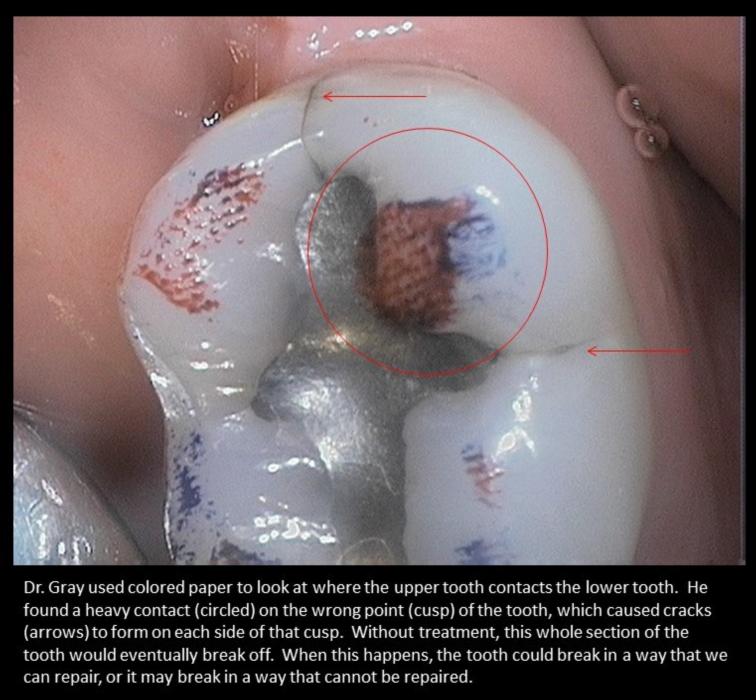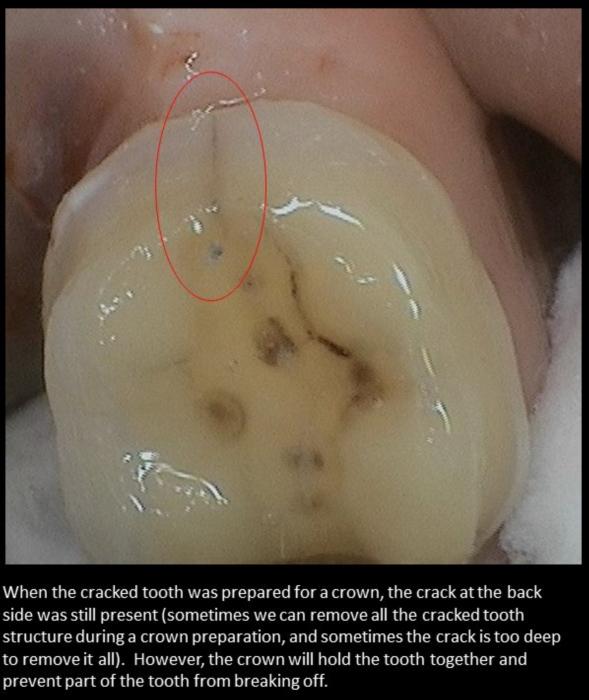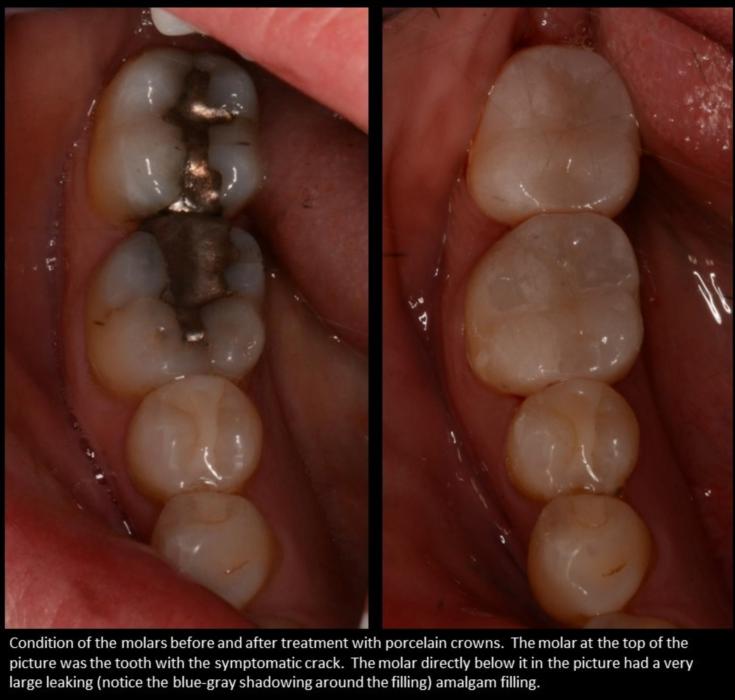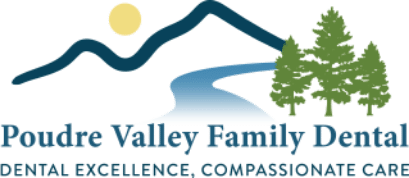This patient presented with persistent pain her previous dentist was unable to diagnose.
At Poudre Valley Family Dentistry, we’re happy to offer cracked tooth repair to the Fort Collins, CO area and surrounding communities.
Looking at the contact points between the upper and lower teeth, it was apparent that there were non- ideal forces on the bottom back tooth. In addition, the tooth in front of it had a very large metal filling with signs of leaking.

When both molars were tested for cracks, the very back tooth showed symptoms consistent with a significant crack, which indicated that the very back tooth was most likely the one causing the patient’s pain. In cases like this, the cracks are rarely due to one catastrophic or traumatic event, but rather due to non-ideal or excessive forces placed on the tooth numerous times over the course of years. These non-ideal or excessive forces can be generated by an imperfect bite and-or by clenching and grinding.
Treatment Options
Dr. Gray discussed treatment options and possible outcomes with the patient and she decided to place crowns on both teeth. When the cracked tooth was prepared for a crown, the crack at the back side of the tooth was still visible. Sometimes it is not possible to remove all the cracked tooth structure as part of a crown preparation.

Following placement of the temporary crowns, the patient experienced complete relief from her symptoms. This gave us a high degree of confidence that we had provided the correct treatment and that the problem was not related to infection or nerve irritation. It also gave us confidence that the crack in the tooth was small enough so that placement of a crown could effectively hold the tooth together.
Once a tooth becomes symptomatic (hurts) due to a crack, the long-term prognosis becomes guarded. For this reason, we prefer to treat cracked teeth before they become painful and before they break. When a tooth breaks, it may break in a way we can repair, or it may break in such a way that it cannot be repaired.
This patient will probably enjoy a pain-free tooth for many years to come, but eventually, the cracked tooth structure under the crown may still propagate (albeit slowly) and cause problems sometime in the future.
Additional damage to these teeth, and the other teeth in the mouth, can be reduced by an analysis of the bite and slight reshaping of the teeth to reduce or eliminate non-ideal contact points and forces.
The good news, in this case, is that we’ve bought the patient time with conservative and effective treatment. Typically, the last resort for restoring a tooth is an extraction and implant, and the longer we can delay implant treatment, the better.

